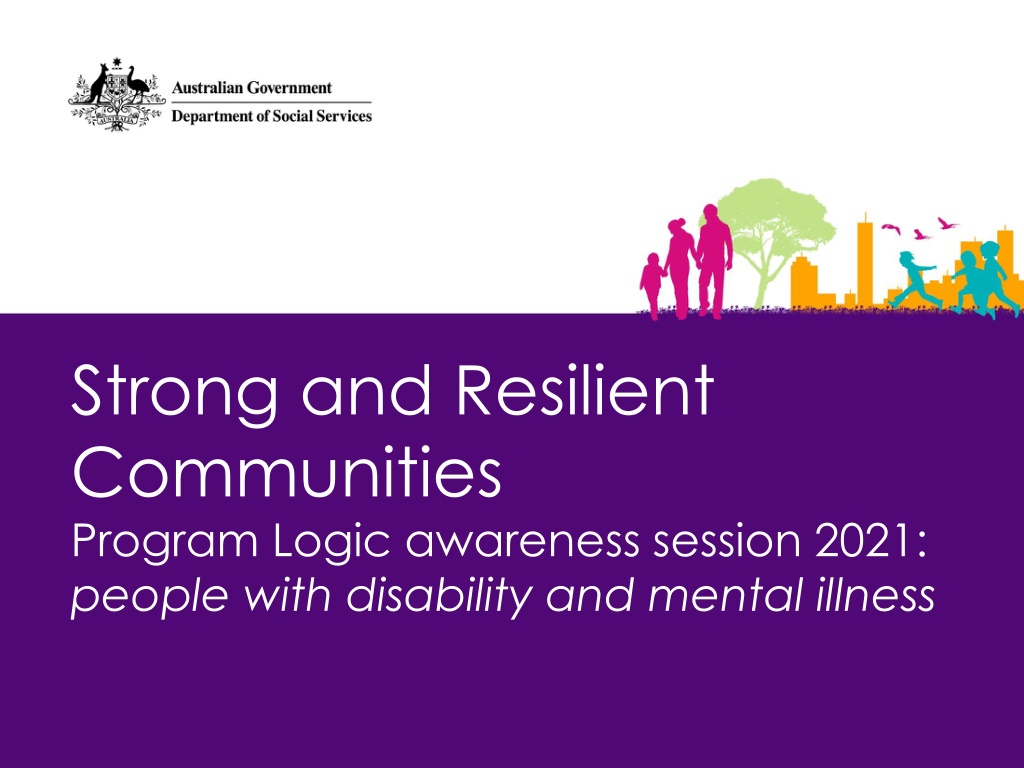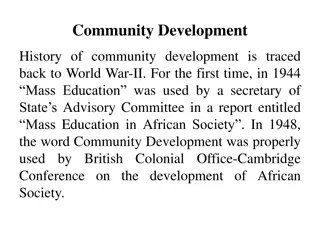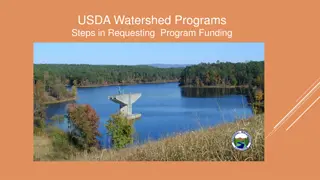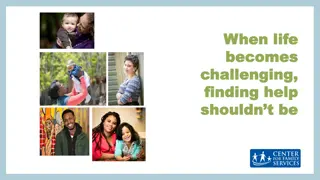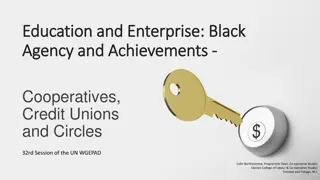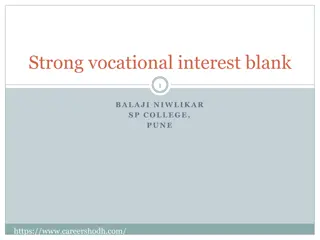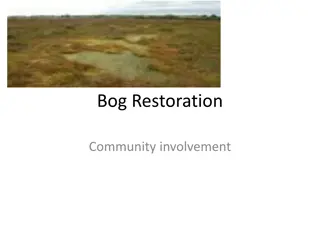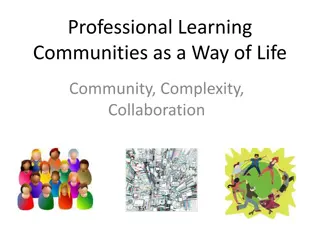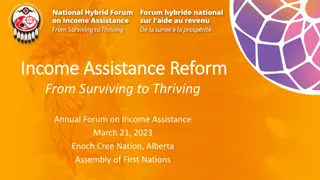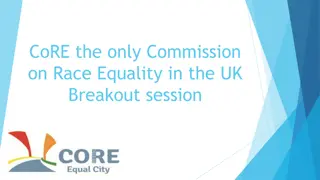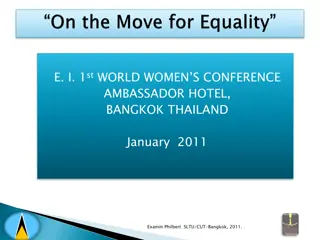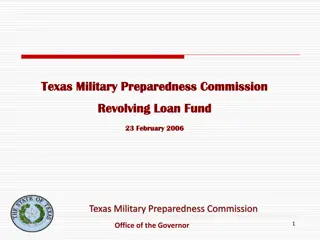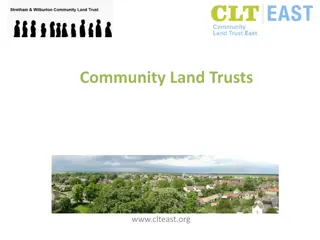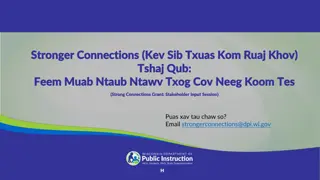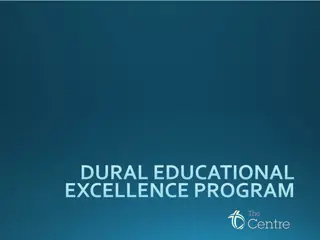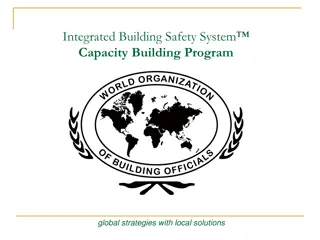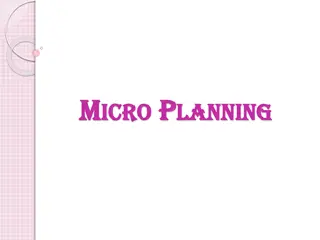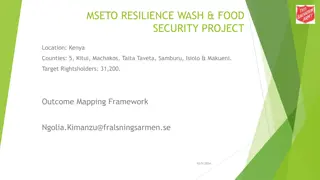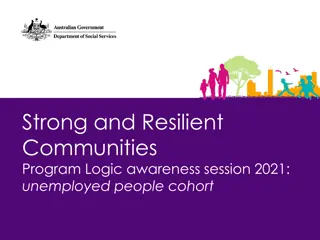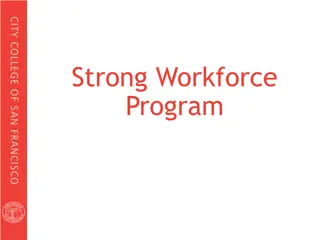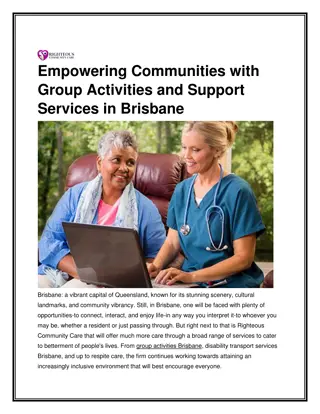Empowering Strong Communities Program
Supporting individuals with disabilities and mental illness through the Strong and Resilient Communities Program. Learn about program objectives, outcomes, and the importance of taking an outcomes-focused approach. Explore the inclusive nature of SARC and how it aims to build cohesive and harmonious communities.
Download Presentation

Please find below an Image/Link to download the presentation.
The content on the website is provided AS IS for your information and personal use only. It may not be sold, licensed, or shared on other websites without obtaining consent from the author.If you encounter any issues during the download, it is possible that the publisher has removed the file from their server.
You are allowed to download the files provided on this website for personal or commercial use, subject to the condition that they are used lawfully. All files are the property of their respective owners.
The content on the website is provided AS IS for your information and personal use only. It may not be sold, licensed, or shared on other websites without obtaining consent from the author.
E N D
Presentation Transcript
Strong and Resilient Communities Program Logic awareness session 2021: people with disability and mental illness
Workshop outline 2 Objectives of the session Understand the overarching aims of the Strong and Resilient Communities program Learn about designing activities under SARC and how to meet target cohort needs Understand outcomes and how to support these through program logics and measurement
3 Strong And Resilient Communities (SARC) SARC aims to build strong, resilient, cohesive and harmonious communities to ensure that individuals, families and communities have the opportunity to thrive, be free from intolerance and discrimination, and have the capacity to respond to emerging needs and challenges.
4 SARC - Inclusive Communities Aims to support community efforts to help vulnerable cohorts on a path to a productive life, by addressing barriers to participating in community activities, such as reducing social isolation, supporting activities that develop soft skills, including educational and awareness activities.
5 SARC Program people with disability and mental illness People with a disability/disabilities and/or mental illness and Who are in particularly vulnerable areas (SEIFA Index of Relative Socio-Economic Disadvantage, quintile 1 to 3)
6 The importance of taking an outcomes focus Indicative program logic
7 Outputs versus outcomes An output is the thing that gets produced as a result of your intervention. An outcome is the benefit gained from the intervention how the participant s life is improved as a result.
8 Program logic the basic format
9 Simple example Problem: hunger Desired outcome: feel less hungry / satiation Input: food, plates, cutlery, space to eat Activities: cooking / preparing, eating Outputs: sandwiches, cupcakes Immediate / short term outcome: less hungry Longer term outcome: satisfied
10 Program logic (with penguins)
11 Developing a logic: start by being person centred Situation/problem Outcomes Outputs and activities Inputs Measurement of outcomes
12 Connection, inclusion, participation: people with disability or mental illness Strengthened community connections Economic and social participation Self-reliance Increased levels of wellbeing, mental health and self-care
13 Key assumptions Increased engagement in social and economic opportunities Helps build confidence, connection, social skills, and positive mental health Reduces social isolation Supports greater self reliance and helps build pathways to a productive life.
14 Client Circumstances Physical health Family functioning Mental health, well- being and self care Employment Education and skills training Personal and family safety Community participation and networks Material wellbeing and basic necessities Financial resilience Age appropriate development Housing
15 Client Goals Changed knowledge Changed skills Changed behaviours Empowered to make own decisions Engagement with relevant support services Changed impact of immediate crisis
16 Logic checklist Is it clear what the project will do? Are the outcomes described really outcomes or are they outputs? Are the causal links clear? Is it clear how the project contributes to the SARC Program objectives?
17 Tools and resources www.Grants.gov.au [ref: FOSARC21] www.SARC@dss.gov.au
19 Thank you DSS SARC POLICY TEAM SARC@DSS.GOV.AU GRANT OPPORTUNITIES WWW.GRANTS.GOV.AU
